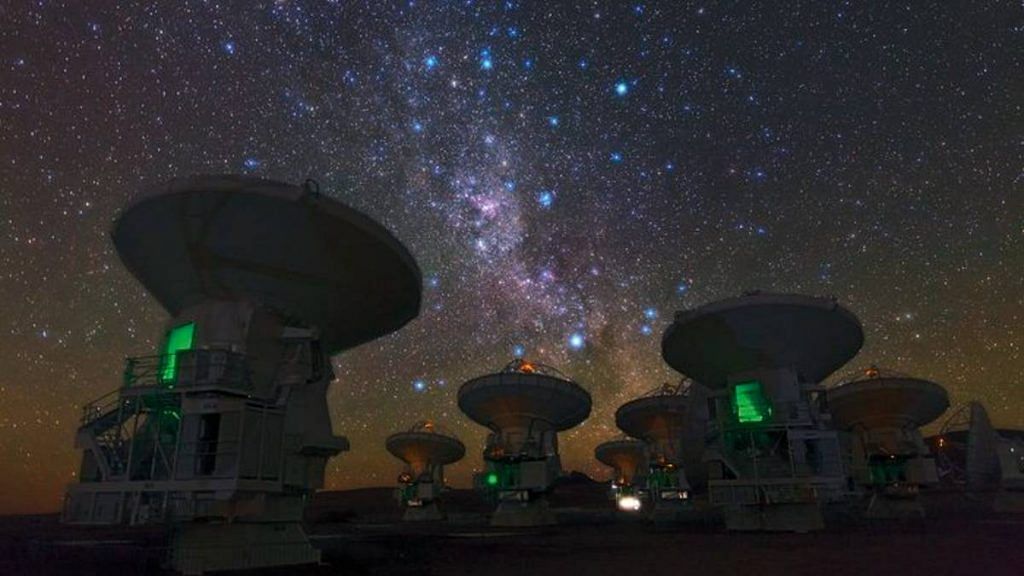Bengaluru: Astronomers using the Atacama Large Millimeter/submillimeter Array (ALMA) telescope in Chile have recorded a hot bubble of gas orbiting Sagittarius A*, the supermassive black hole at the centre of the Milky Way galaxy. These have previously been spotted only at X-ray and infrared wavelengths, but this is the first time such a phenomenon was recorded by a radio telescope.
The telescope observed the gas bubble swirling around the black hole, doing a complete revolution in just 70 minutes. This requires the bubble to be moving at nearly 30 per cent the speed of light.
The findings were made in 2017 when ALMA was part of eight radio telescopes that came together to image Sagittarius A*(pronounced A-star) as part of the Event Horizon Telescope Collaboration, which had resulted in the first ever image of the black hole released earlier this year.
During calibration of the image with data from ALMA, the team realised there was more information available within the telescope’s data.
Serendipitously, some observations were made immediately after a burst of X-ray energy was emitted from the black hole. Such flares are thought to be associated with “hot spots” or hot gas bubbles that orbit very fast and very close to the black hole.
The flares are thought to originate from magnetic interactions within hot gas orbiting the black hole, and the new findings confirm the theory.
The findings are published in the journal Astronomy & Astrophysics.
“What is really new and interesting is that such flares were so far only clearly present in X-ray and infrared observations of Sagittarius A*. Here, we see for the first time, a very strong indication that orbiting hot spots are also present in radio observations,” said lead author Maciek Wielgus of Max Planck Institute for Radio Astronomy, Germany, in a press release.
Also read: Space is not silent. New NASA audioclip reveals what blackholes sound like
Data matches previous discoveries
The ALMA telescope array enables astronomers to study polarised radio emission from Sagittarius A*, which further helps understand the magnetic field around the black hole. The team used data together with theoretical models to understand the formation and evolution of the hot spot or gas bubble.
They were also able to gather data about the environment the bubble is embedded in, including more refined properties of the magnetic field around the black hole.
The findings and data match some of the previous discoveries made by other instruments, like the Very Large Telescope which provided some data about the nearest star S2 and the closest material revolving around the black hole. Those findings also recorded three bright flares that orbited the black hole.
Back then, too, with non-radio data, astronomers had concluded that the hot spots were travelling at 30 per cent the speed of light.
“In the future, we should be able to track hot spots across frequencies using coordinated multiwavelength observations with both GRAVITY and ALMA — the success of such an endeavour would be a true milestone for our understanding of the physics of flares in the Galactic Centre,” said Ivan Marti-Vidal, co-author on the paper, from Spain’s University of València, in the press release.
“Hopefully, one day, we will be comfortable saying that we ‘know’ what is going on in Sagittarius A*,” added Wielgus.
(Edited by Nida Fatima Siddiqui)
Also read: Black hole 26,000 light years from us proves Albert Einstein’s theory right
